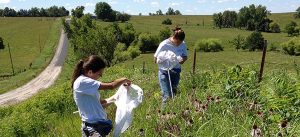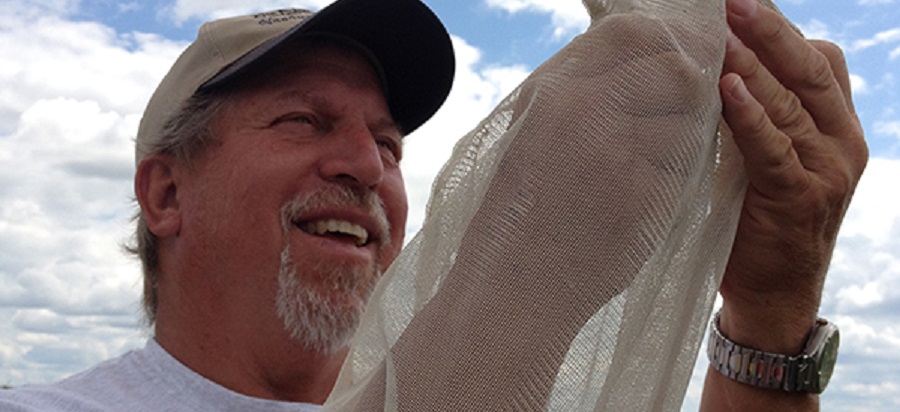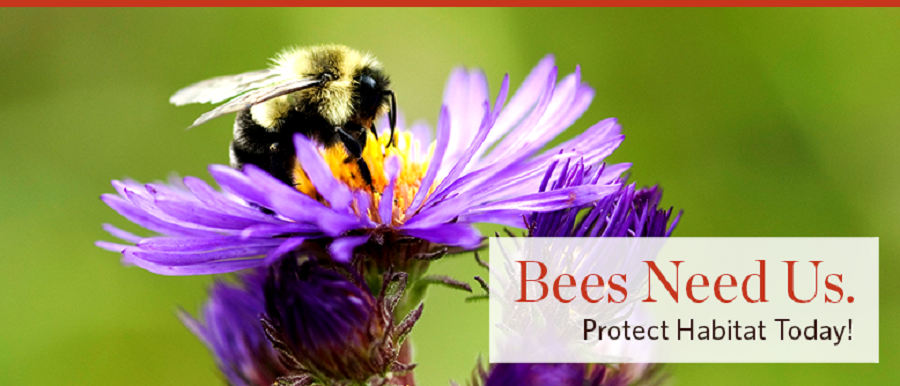It’s a good thing I’m not allergic to bee stings… they’re practically part of my job description. But if my research can unlock better ways to give bees a fighting chance, stings are a small price to pay. Bees are in big trouble. We’ve lost an astounding 25 percent of our wild bees in just the last five years, making every step we can take to bring bees back especially urgent.
And when all the data’s been analyzed, I’m hopeful that we’ll shed new light on how our prairies can help.
For bees to survive here in Missouri they need consistent food sources — namely blooming flowers — from early April to late October. My research reveals which kinds of plants, where, and in what concentrations really do the best job of creating ideal habitat for wild bees.

How we’re answering those questions is both simple AND painstaking.
Bear with me a minute, because I’m about to hit you with a lot of numbers. But I really want you to understand just how detailed we need to be…
- To figure out the relationship between bees and the plants and lands they depend on, I chose 17 research sites across southern Iowa and northern Missouri.
- Selected six flowering plant species that are good sources of nutrition for bees.
- And whenever one of these species bloomed, my research assistants and I hit the field.
- Then counted and documented the number of bees at 12 randomly chosen plants (which add up to 1,224 plants total across all the species and all the sites).
- All total, we spent about 1,500 hours out on the prairies. That’s the equivalent of more than two full months, 24 hours a day, collecting data.

A pretty good reminder that, at its heart, science is about careful observation, don’t you think?
Now, we’re about to learn what all that data has to teach us. We might find out that native prairie is superior for bees. We might find that restored prairie can support bees just as well, but only if swaths of land are large enough.

What do we know for sure? The results will give us the beginning of a roadmap for how to better manage prairies to help bees thrive and begin to counter-balance the habitat loss that’s threatening them. Not just here in Missouri, but anywhere there are tallgrass prairies.
It’s exciting and it gives me hope that we’ll make a tangible difference for bees.
Additional information: The total number of individual plants sampled was 1,224. However, this represents only six species of plants that are particularly attractive to bees. These species include Foxglove Beardtongue (Penstemon digitalis), Leadplant (Amorpha canescens), Purple Prairie Clover (Dalea purpurea), Prairie Blazing Star (Liatris pycnostachya), Grey-Headed Coneflower (Ratibida pinnata), and Sawtooth Sunflower (Helianthus grosseserratus). For a more complete list of bee and pollinator friendly plant species, I’ve attached a planting list promoted by the Xerces Society, an organization dedicated to pollinator conservation. These plants can easily be grown in your own yard.
My research is just one way that every one of us has the power to take action to protect the natural world we cherish.
With high hopes,

Hilary Haley
Conservation Coordinator
Dunn Ranch Prairie
16970 West 150th Street
Hatfield, MO 64458
Phone: (660) 867-3866
The Nature Conservancy
PHOTOS: © Hilary Haley.

